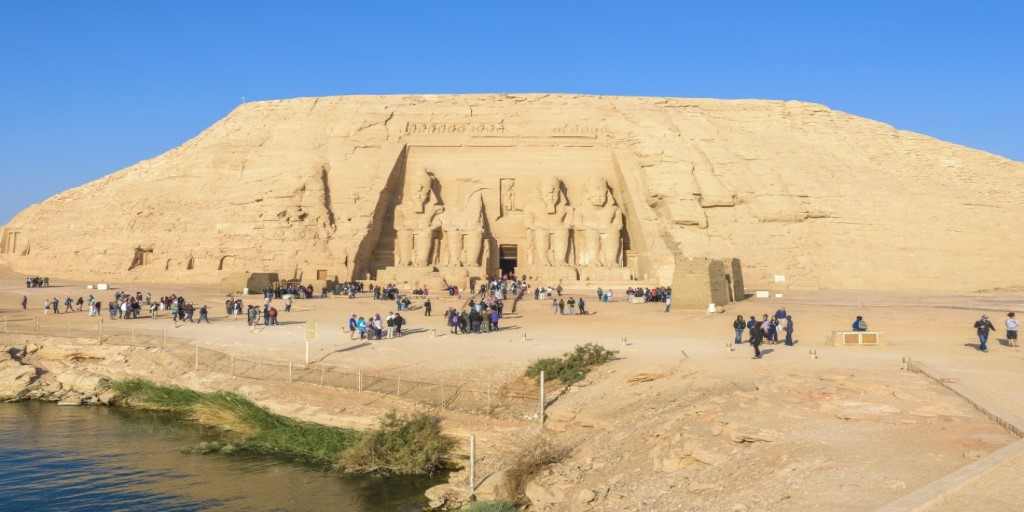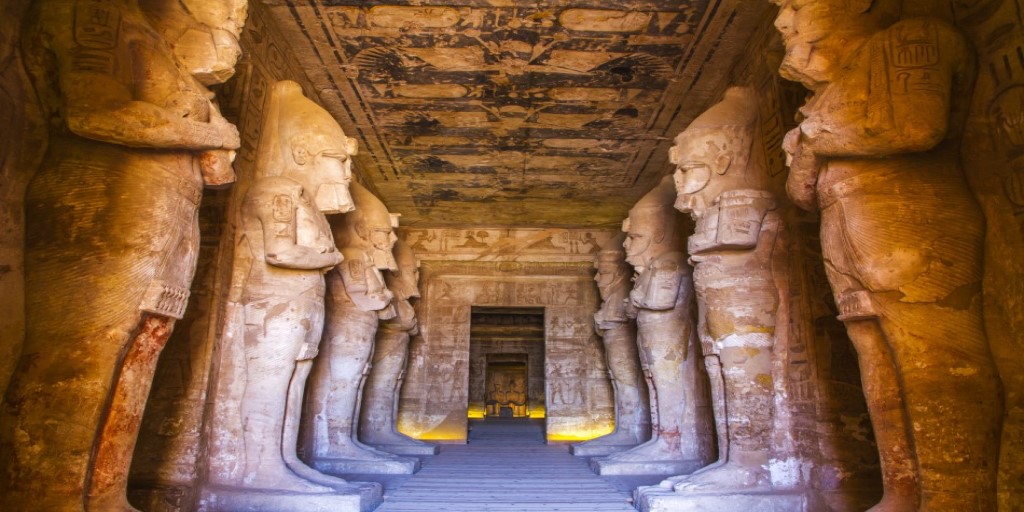Abu Simbel: Unraveling the Magnificence of Ancient Egypt
Nestled on the banks of Lake Nasser in southern Egypt, Abu Simbel stands as a testament to the grandeur and ingenuity of ancient Egyptian civilization. Carved into the sandstone cliffs during the reign of Pharaoh Ramesses II, these colossal temples have captivated visitors for centuries with their imposing statues, intricate reliefs, and rich historical significance. Best Egypt travel packages

The twin temples of Abu Simbel are dedicated to the gods Amun-Ra, Ra-Horakhty, Ptah, and the deified Ramesses II himself. The larger of the two temples, known as the Great Temple, is adorned with four towering statues of Ramesses II seated on his throne, each standing over 20 meters tall. These colossal figures, with their serene expressions and imposing presence, symbolize the pharaoh’s divine power and eternal reign.
The façade of the Great Temple is embellished with intricate carvings depicting scenes of battle, triumph, and worship, offering a vivid portrayal of ancient Egyptian life and religion. Inside, the temple’s inner sanctum houses a series of chambers adorned with colorful hieroglyphs and reliefs, illustrating the pharaoh’s military campaigns, religious ceremonies, and divine lineage. Egypt tour packages with flights
Adjacent to the Great Temple stands the smaller but equally impressive Temple of Hathor and Nefertari, dedicated to the goddess of love and beauty and Ramesses II’s beloved wife. Flanked by statues of the pharaoh and his queen, the temple’s façade exudes elegance and grace, with intricate reliefs depicting scenes of royal devotion and divine worship.
What makes Abu Simbel truly remarkable is not just its architectural splendor but also the incredible engineering feat that preserved it for millennia. In the 1960s, the temples faced the threat of submersion due to the construction of the Aswan High Dam. In a monumental effort led by UNESCO, the temples were meticulously dismantled and relocated to higher ground, ensuring their preservation for future generations to admire and cherish.
Today, Abu Simbel continues to inspire awe and wonder, welcoming visitors from around the world to marvel at its timeless beauty and historical significance. Whether exploring the intricacies of its hieroglyphs, gazing up at its towering statues, or simply soaking in the majesty of its surroundings, a visit to Abu Simbel is an unforgettable journey through the annals of ancient Egypt.

As the sun sets over the shimmering waters of Lake Nasser, casting a golden glow upon the temples, visitors are reminded of the enduring legacy of Egypt’s pharaohs and the timeless allure of its ancient wonders. Abu Simbel stands as a testament to the indomitable spirit of human creativity and ingenuity, inviting travelers to embark on a journey of discovery and enlightenment in the heart of the desert.